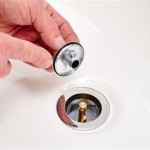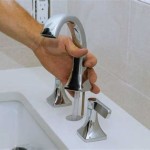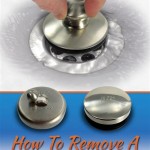Stand Alone Bathtubs: Essential Size Considerations
Freestanding bathtubs, often referred to as stand-alone bathtubs, have become a popular choice for contemporary bathroom designs. They offer a touch of elegance and luxury while providing a relaxing and rejuvenating bathing experience. However, selecting the right size for your bathroom is crucial to ensure both comfort and functionality.
Several factors determine the optimal size of a stand-alone bathtub, including the size of your bathroom, the number of bathers, and the intended use. Here are the essential aspects to consider when choosing the right size:
1. Available Space Dimensions:
Measure the available space in your bathroom to determine the maximum size of a bathtub that will fit comfortably. Consider the distance between walls, fixtures, and other obstacles. Ensure you have enough space to move around the tub easily and access it from all sides.
2. Bather Capacity:
Select a bathtub size that accommodates the number of individuals who will be using it regularly. A single-person bathtub is typically 24-29 inches wide, while a two-person tub can range from 30-36 inches in width. If you prefer a more spacious bathing experience, consider a double-ended tub that allows bathers to face each other.
3. Tub Shape and Style:
The shape and style of the bathtub influence its size. Oval, round, or square tubs tend to be more space-efficient than elongated or rectangular models. Consider the overall aesthetic of your bathroom and the style that best complements the décor.
4. Intended Use:
Think about how you intend to use the bathtub. If you primarily want to soak and relax, a deeper tub with ergonomic contours will provide a more comfortable experience. On the other hand, if you prefer faster bathing or cleaning, a shallower tub might be more suitable.
5. Safety and Accessibility:
For elderly or disabled individuals, consider the height and accessibility of the bathtub. A lower tub or one with a step-in seat can enhance safety and ease of use. Grab bars or other assistive devices may also be necessary depending on the user's needs.
6. Overall Comfort:
Ultimately, the most important factor to consider is personal comfort. Test out different bathtub sizes if possible to determine the one that provides the best bathing experience for you. Factors such as legroom, shoulder width, and lumbar support should be evaluated.
By carefully considering these essential aspects, you can select a stand-alone bathtub size that meets your specific needs and enhances the overall functionality and beauty of your bathroom.
Guide For Freestanding Tubs Signature Hardware

What Is A Good Size For Freestanding Tub Tyrrell And Laing
Guide For Freestanding Tubs Signature Hardware

What Is A Good Size For Freestanding Tub Tyrrell And Laing
Freestanding Soaking Tub Dimensions Colab

Zeafive Ane 55 In X 27 5 Acrylic Soaking Tub Flatbottom Free Standing Bathtub Chrome Anti Clogging Drain Glossy White Z32e4s55w The Home Depot

Freestanding Baths Stand Alone Bathtubs Big Bathroom
Guide For Freestanding Tubs Signature Hardware

Stone Bathtub Torino Dimension L 160 X W 70 H 65 Cm

Standard Bathtub Dimensions Types Of Foyr
Related Posts








